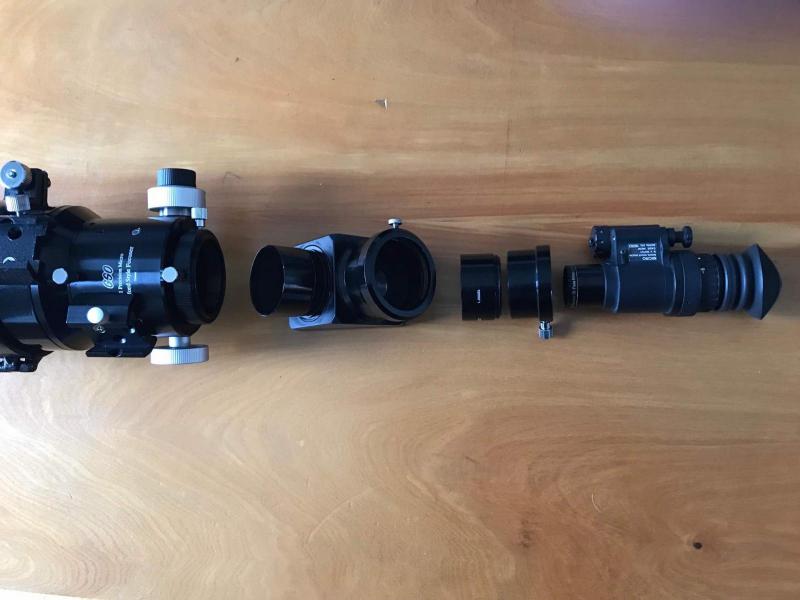

But this is precisely the point of filters: they remove the light you don't need and only deliver the wavelengths you want for a given situation. This flies in the face of conventional astronomical wisdom that every photon counts, that more light means better views. They work by stopping - filtering out - some wavelengths of light from passing through your telescope's tube, changing what you see through the eyepiece. The point of filters is that they alter how astronomical targets appear. These often-colorful discs are available in 1.25-inch or 2-inch sizes and screw into the barrel of an eyepiece, the end that attaches to a telescope. If there is one seriously neglected and underused tool in your astronomical toolbox, then it surely has to be the filter. Check back each month for exciting articles from renowned amateur astronomers, practical observing tutorials, and much more! These tiny accessories can make a huge difference to what you can seeġ.25" Orion Basic Set of Four Color Filters
#Different eyepieces in starry night pro series#
Orion is proud to partner with BBC Sky at Night Magazine, the UK's biggest selling astronomy periodical, to bring you this article as part of an ongoing series to provide valuable content to our customers. Try #25 Red for long black-and-white exposures of the Omega or Rosette Nebulas.ĭo you have questions about selecting the right color filter? Email us at contact us via live chat, or give us a call Toll-Free at 80, and we'll help you find what you need! #58 Green will block street light while passing much of the wavelength of doubly ionized oxygen in emission nebulae. The #82A Pale Blue is great for stacking with other colors, and can adjust film color balance by absorbing excess yellow and red. Refractor chromatic distortion is also reduced by #15, and by #80A. You will improve black-and-white photographs by blocking UV light with #15 Deep Yellow. Reduce the Moon's glare with #80A Medium Blue, and enhance the contrast of lunar rilles and strata with #15 Deep Yellow. #15 helps sharpen Saturn's image in photographs, improving the resolutions of Cassini's division. See the difference in brightness of the extremes of the rings with #25, #11, #58, or #80A. Many subtle globular details are improved by #15 Deep Yellow. Go from seeing only two bands without a filter to seven or more with a filter! Try stacking filters to reduce heavy glare. This great planet reveals its cloud bands, loops, festoons, ovals, and Red Spot with #11 Yellow-Green, #80A, #58, and #21. The polar caps stand out with #15 Deep Yellow and #80A Medium Blue examine the melt lines with #58 Green. #25 Red passes the predominant reflections of surface plains and maria, and #21 Orange is good for reducing the intense glare to enhance detail and mottling. With a #47 Violet filter, or stacked #58 Green and #80A Medium Blue filters, you'll reduce the severe twinkling for a better view of the fascinating changing phases. No matter what telescope aperture you use, Venus's excessive brightness usually causes a very "overexposed," roiling image. Mercury is usually best observed just after sunset, when the sky is awash in orange light, so employ #21 Orange with high magnifications to see the planet's phases. #25 Red will make the planet's disk stand out against a blue sky, permitting daytime or twilight viewing. That's why "the Red Planet" is most effectively enhanced with a green filter.īelow is a guide to using color filters to best view the planets in our solar system. Bad "seeing" becomes acceptable good seeing becomes superb!īecause many planets have a characteristic color (e.g., Mars is reddish), you will dramatically increase detail by reducing the predominant hues, uncovering hidden contrast and surface markings. Mars' polar caps stand out like tiny pearls, and vague lunar rilles acquire greater depth and contrast. Delicate markings appear on Saturn's globe, and the Cassini ring division darkens and solidifies. Suddenly, the smeared, pale bands of Jupiter resolve into loops and festoons. When you employ a color filter to zero in on a narrow region of the spectrum, the scattering of interfering wavelengths is enormously reduced.

Faint contrasting areas blend together due to "irradiation" - a distortion of the boundaries between light and dark surfaces.

Using Color Filters Seeing Planets in a Different Light Reveals More DetailĮarth's atmosphere is in constant fluctuation turbulent air currents blur fine surface detail on solar system objects viewed through a telescope.


 0 kommentar(er)
0 kommentar(er)
